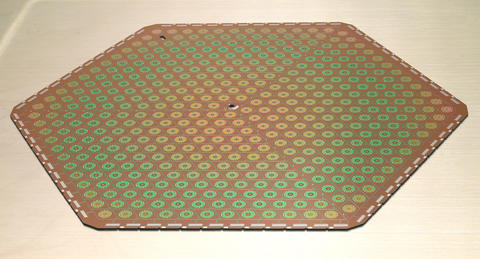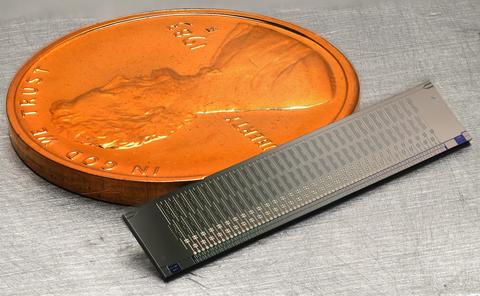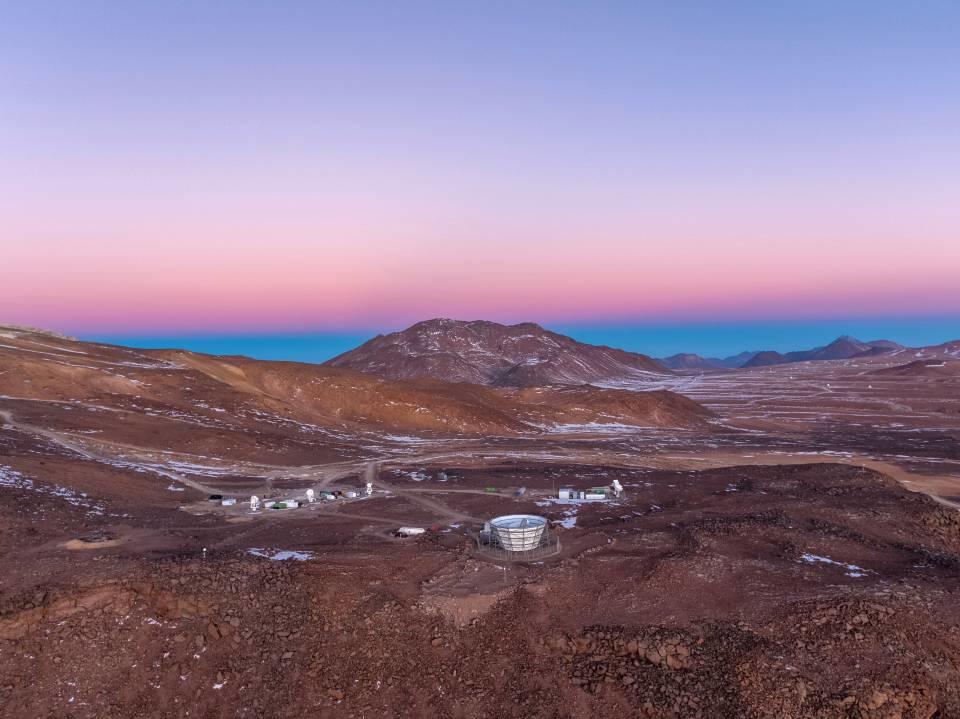Microwave Detectors and Multiplexing: NIST Researchers Help Astronomers Examine the Early Universe

NIST researchers designed this detector array, which contains 1,720 transition-edge-sensor bolometers, to measure the polarization of the cosmic microwave background.
Perched atop a high plateau in Chile’s Atacama Desert, a long-awaited observatory is beginning to take shape: the largest suite of ground-based telescopes devoted to studying the oldest light in the universe, radiation left over from the Big Bang.
Astronomers have for decades studied this primeval radiation, known as the cosmic microwave background (CMB), which bathes the universe and provides a snapshot of what the 14-billion-year-old cosmos looked like in its infancy, just 380,000 years after its violent birth. That’s when the universe became cool enough for electrons and atomic nuclei to coalesce into atoms, allowing light to stream freely into space for the first time.
The group of telescopes in Chile, collectively known as the Simons Observatory, offers a key advantage over other similar instruments: It features a new generation of exquisitely sensitive microwave detectors and a sophisticated read-out system, both built by scientists at the National Institute of Standards and Technology (NIST).
The NIST-designed detectors, known as transition-edge-sensor bolometers, are heat sensors consisting of thin films of material chilled to one-tenth of a degree above absolute zero. Acting like miniature thermometers, the bolometers can discern miniscule temperature variations in the CMB over more than 40 percent of the sky, noted NIST scientist Johannes Hubmayr.
These tiny hot and cold spots in the radiation, which correspond to slight over- and underdensities in the early universe, represent the seeds from which galaxies formed. (The bolometers also record patterns of different polarizations in the CMB—wiggles in the electric field of the radiation—that encode information about the universe an instant after the Big Bang.)

To measure temperature, researchers apply a small voltage to the bolometers that keeps the chilled detectors poised between two states -- superconducting, in which current flows freely without any resistance, and non-superconducting, in which current encounters resistance. When the sensors absorb energy from the incoming CMB radiation, their electrical resistance increases, resulting in a decrease in the amount of current flowing through them. The drop in current provides a measure of the temperature of the CMB at a particular point on the sky.
Simultaneously processing the signals from 67,080 ultracold bolometers on the Simons Observatory presents a challenge, however. It’s virtually impossible to connect a wire from each of the detectors to a room-temperature readout device without heating the bolometers to a temperature beyond their narrow operating range.

NIST researchers, including John Mates, have pioneered a method that enables signals from thousands of the bolometers to be combined on a single wire. The technique, which relies on devices known as SQUIDs, converts the change in current measured by each bolometer into a shift in frequency of a tiny resonator. By combining on a single wire the unique frequency shifts induced by thousands of individual bolometers, the NIST team dramatically reduced the number of room-temperature connections and the potential for heat transfer.
For the observatory, the NIST researchers fabricated more than 2,000 tiny resonators and SQUIDs on a single silicon wafer. Over a two-year period, the team fabricated more than 50 of these wafers, which will be used to read out the transition-edge-sensor bolometers. Researchers have never before delivered such a large quantity of high-quality superconducting circuitry.
In their most recent study, the scientists demonstrated that they only needed to electronically test four of the 32 chips housed on each wafer to verify the function of the entire wafer.
Hubmayr, Mates, Dante Jones and their NIST colleagues have submitted a report on their work to the Journal of Thermal Physics.

